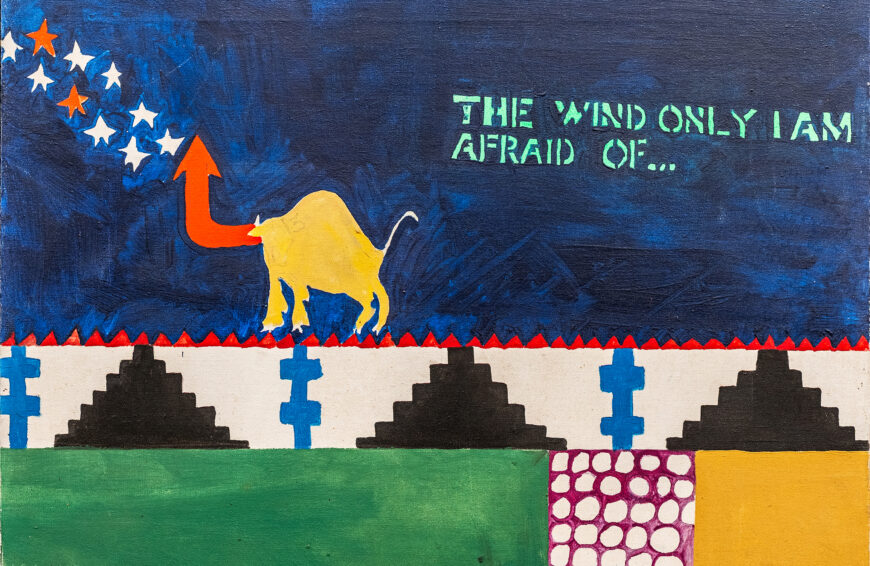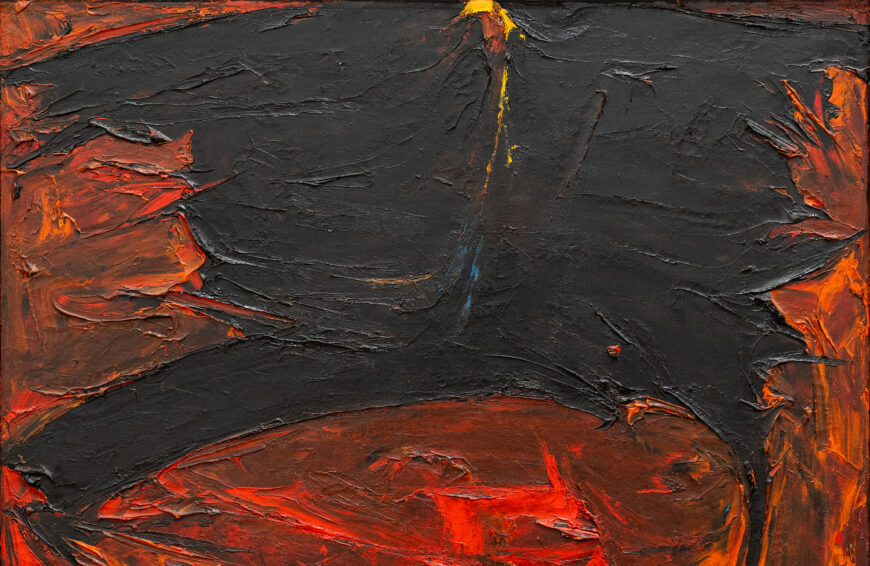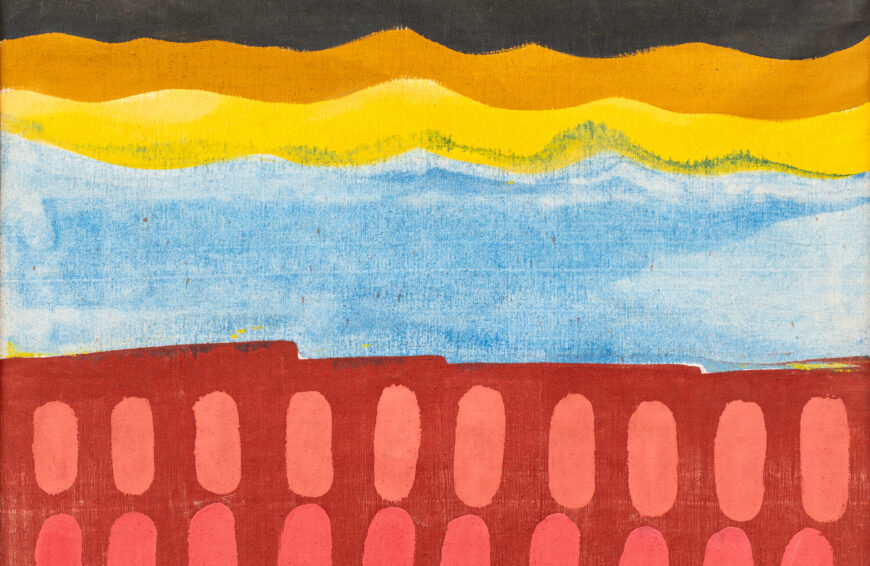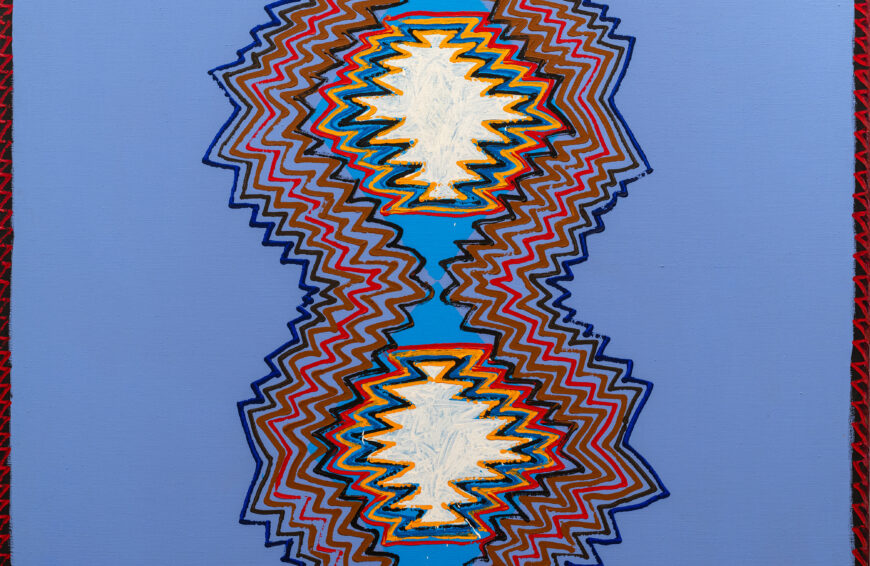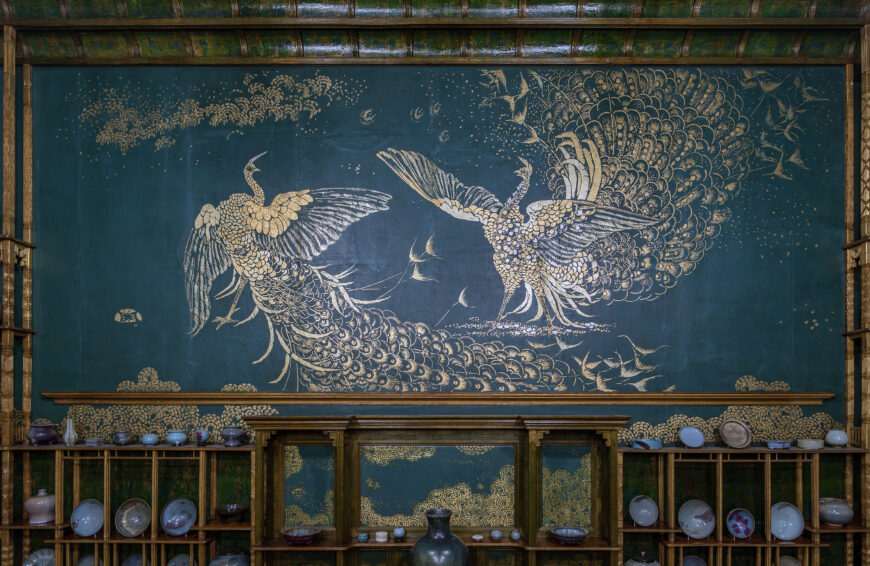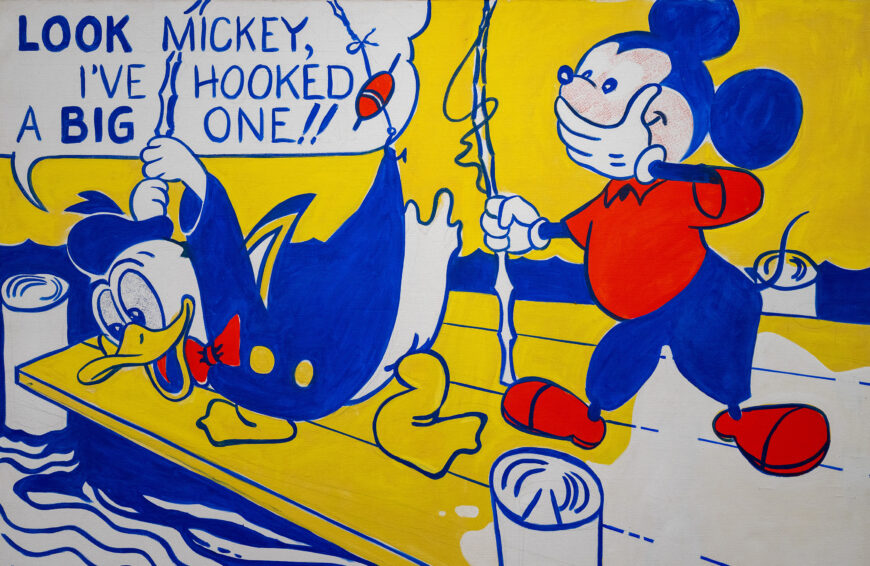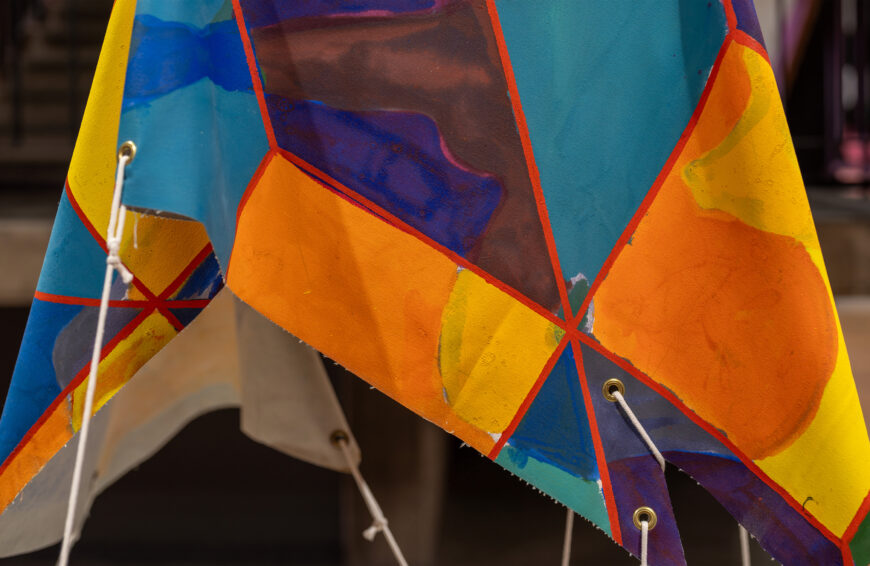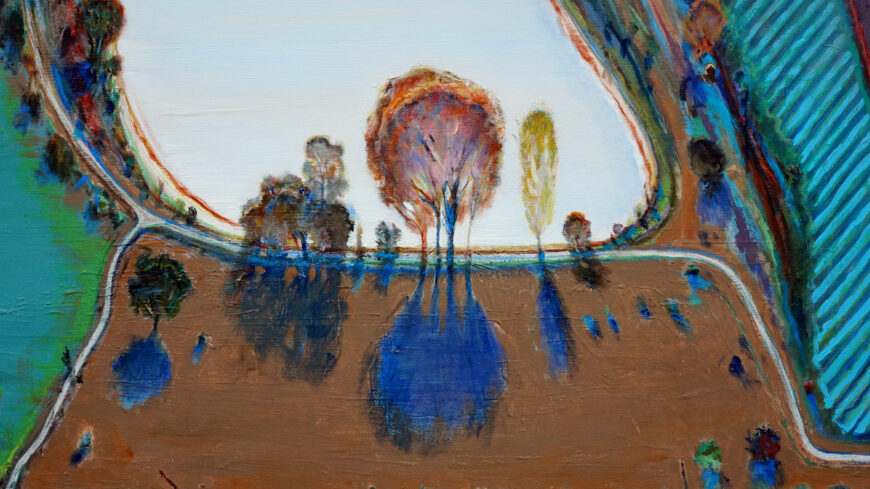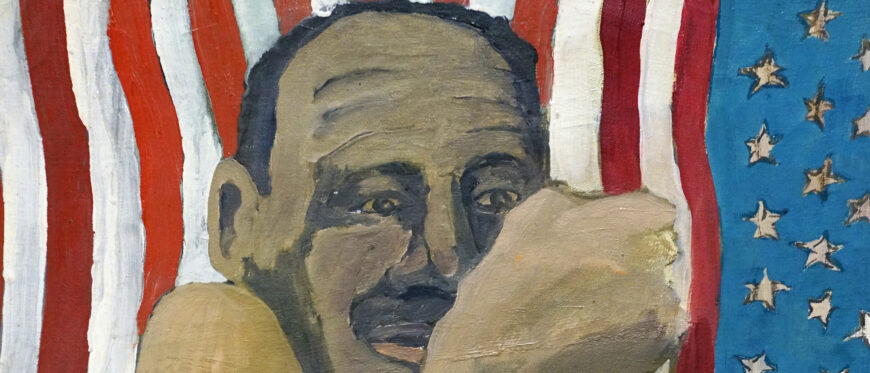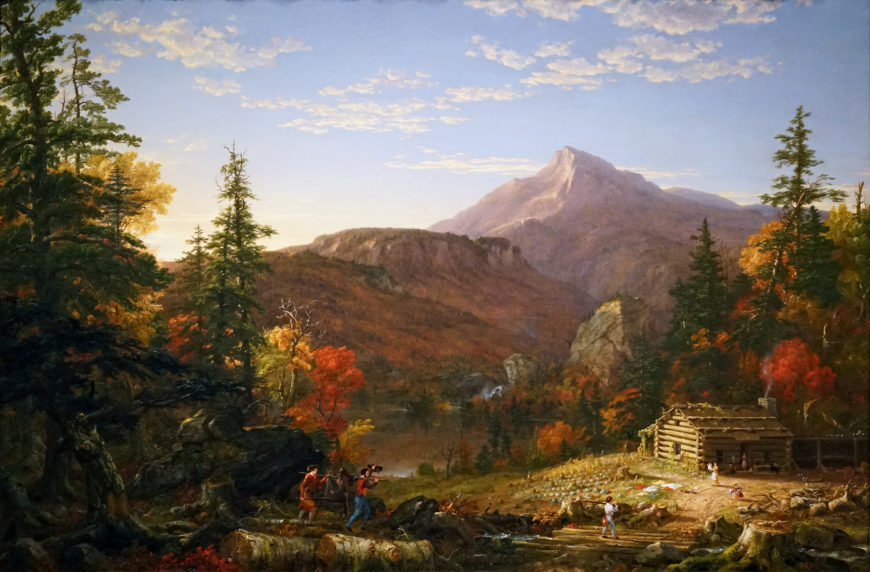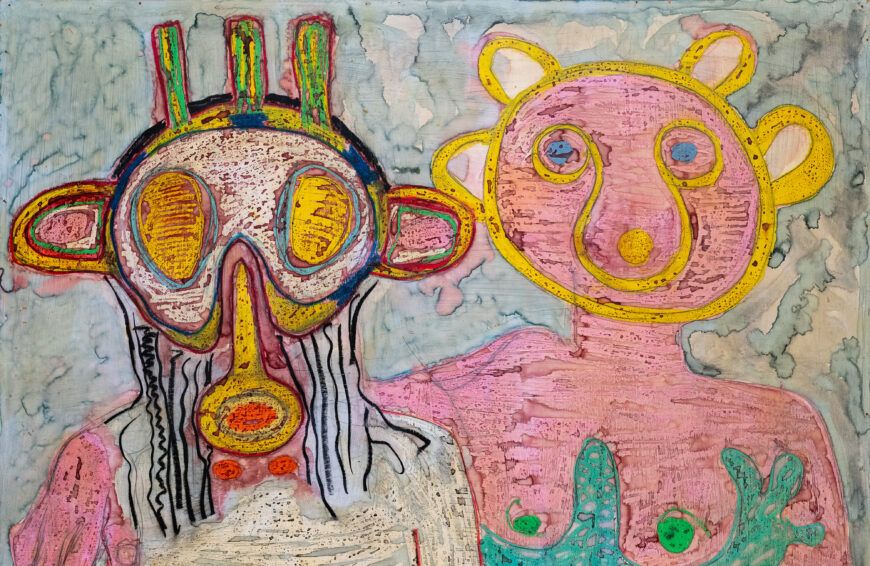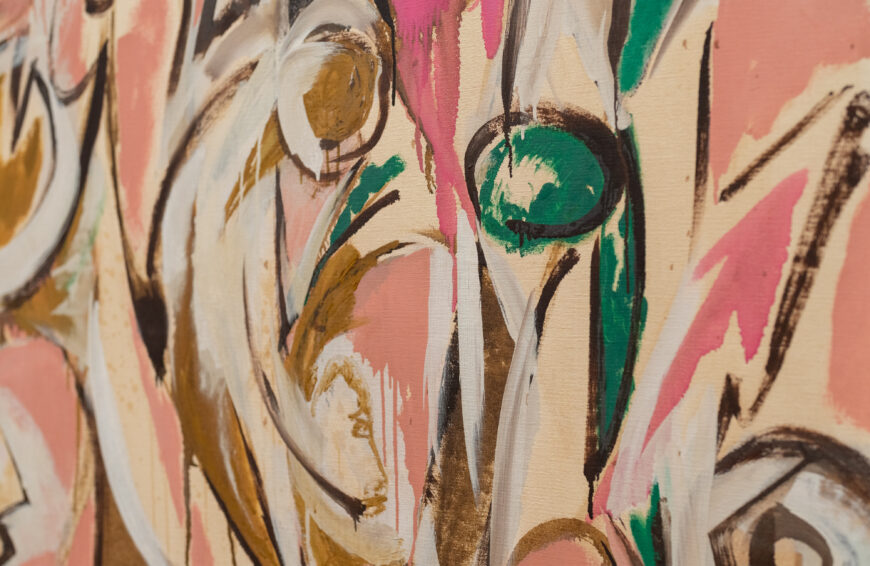Henry Ossawa Tanner, The Thankful Poor
0:00:05.2 Dr. Steven Zucker: We’re at the Akron Art Museum, looking at a painting by Henry Ossawa Tanner. This is The Thankful Poor. It’s one of his most famous images. The light is so sensitive. It’s almost a lesson in the complexity of indirect light.
0:00:21.3 Dr. Jeffrey Katzin: I think Tanner, across his career, light is so important. It’s both storytelling and sort of a visual substance all at once. In this picture, there’s such a sense of intimacy and a private space, and the gentle quality of the light across the whole image is really a big part of making you feel that.
0:00:42.1 Dr. Steven Zucker: We have two figures, an older man and a younger boy. They’re both in this moment of quiet prayer. In fact, you get a sense of absolute stillness and the light gently enters from the upper left. For example, there’s the hard, sharp, shiny surfaces of the porcelain, and then there’s the shimmering softness of the tablecloth. Or look at the incredible handling of the older man’s sleeves as they catch the light, as they wrinkle, as their colors begin to softly emerge.
0:01:12.7 Dr. Jeffrey Katzin: When I think about the light in this picture, the central most exciting feature to me is the side of the older man’s face, which is almost entirely darkened to invisibility. There’s only two people here. What they’re doing is so central to the storytelling and to choose to put that side of the face in almost total darkness is a bold choice.
0:01:32.7 Dr. Steven Zucker: Look at the way that the light hits the back of the man’s gray hair, and then that sharp line of his collar, and then cascades down the man’s shoulder and his upper arm. The darkness of the man’s face helps to make me appreciate to a greater extent the volume of space that the artist is creating under and between the man’s hands. And in the composition as a whole, it is enough room to actually contain the boy’s head and shoulders perhaps. And so even though they’re sitting across the table from each other, he is embracing that child.
0:02:06.6 Dr. Jeffrey Katzin: I feel like the whole picture moves diagonally. From the window into the scene, you kind of follow the light, and there is a counter diagonal with the plate that’s at the very front of the table, which maybe doesn’t belong to either of the two figures. That might be for us the viewer. And the spoon next to it, is that spoon for us? This is a really private moment, and I would feel if I weren’t a little bit invited into the picture, that I might be invading the scene. And so this counter diagonal from us into the picture and through the plates and the spoon there is really important.
0:02:38.7 Dr. Steven Zucker: It’s an act of generosity. And in fact, this whole painting is really about generosity. It’s about their thankfulness for even what little they have. This is a painting that was made when the artist had returned from France where he had worked, where he had studied, and had confronted, again, the intense racism that exists in the United States. And scholars think that this painting is in some ways a reaction to that, an attempt to represent African Americans as a counter to the racist representations that were so common at the end of the 19th century.
0:03:11.3 Dr. Jeffrey Katzin: Tanner grew up in Pittsburgh and Philadelphia. He spent time in art schools. He was a relatively urban person himself, and this strikes me as a much more Southern, rural kind of environment. He spent some time in Atlanta and worked as a photographer, but I think it’s really interesting seeing him draw from an environment that wasn’t necessarily his own in order to make a point about humble, but religiously infused and dignified life among Black Americans.
0:03:41.1 Dr. Steven Zucker: Even the artist’s middle name is a signal to the lifelong commitment that he had, that his family had to racial equality in the U.S. He was named after what had become a very famous event when the abolitionist John Brown violently attacked slave owners during a period known as Bleeding Kansas, when the state was determining whether or not it would be a free or a slave state.
0:04:03.7 Dr. Jeffrey Katzin: The Battle of Osawatomie led to Henry Ossawa Tanner’s middle name, and he actually passed that middle name onto his son as well. His father, Benjamin Tucker Tanner, was a bishop in the American Methodist Episcopal Church. And that connection really is in all likelihood where Tanner derived his interest in a scene of religious devotion like this and the religious scenes that became the mainstays of his later career as well. It’s very personal for him, and I’m sure that feeds into this sense of a family passing down religious tradition and passing down ethical beliefs about living that you can see in the intergenerational image here. And we’ve sort of been talking around it. It’s not clear if this older man is a father or a grandfather. You get this broader sense of family and lineage in the way that things are passed down across generations rather than something more specific.
0:04:55.7 Dr. Steven Zucker: There are no bright colors here.
0:04:58.6 Dr. Jeffrey Katzin: There’s something really important in this picture about subtlety and about restraint, which maybe goes toward that idea of humility. It certainly goes into that sense of quiet or that sense of a peaceful image. Because when you look across it, you’re absolutely right. There aren’t really bright colors. There’s the warm that’s reddish, and there’s the blue that’s cooler. If you go all the way to the top left through the window, there’s that hint of green. But otherwise, everything is this really compressed range, both of brightness and of color. Same thing is true of detail.
0:05:28.6 Dr. Jeffrey Katzin: Tanner could really handle the paint loosely or very tightly as he chose. In the older man, the hair and the hands have all of this detail. In the wall, there’s very little, and it’s very broad. And then the tablecloth is a wonderful area for that because some areas are pretty detailed and you almost feel like you’re seeing the weave of the fabric of the tablecloth. And then some areas are very loosely painted. There’s so much in the side of the tablecloth as it hangs down from the corner of the table that’s yellow and red and green. And if you just isolate that hanging portion of the tablecloth, it makes for a wonderful abstract painting. It’s wonderful when you look at realistic paintings and see the seeds of abstraction and just that enjoyment of color and contrast and something purely visual, even in a picture where it’s meant to represent something specific.
| Title | The Thankful Poor |
| Artist(s) | Henry Ossawa Tanner |
| Dates | 1894 |
| Places | North America / United States |
| Period, Culture, Style | Jim Crow era / Realism |
| Artwork Type | Painting |
| Material | Oil paint, Canvas |
| Technique |
Anna O. Marley, editor, Henry Ossawa Tanner: Modern Spirit, exhibition catalogue (Berkeley: University of California Press, 2012).
Kristin Schwain, Signs of Grace: Religion and American Art in the Gilded Age (Ithaca: Cornell University Press, 2008).
Loading Flickr images...




